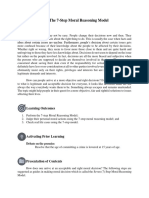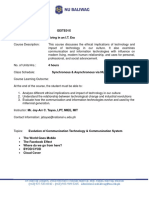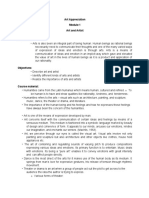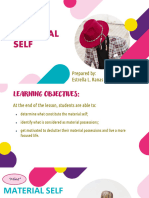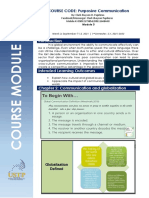0% found this document useful (0 votes)
494 views7 pagesUnderstanding The Self: Module 3 Lesson 13
This document discusses goal setting and its importance for success. It provides 5 reasons why goals are important: 1) Goals give focus, 2) Allow you to measure progress, 3) Keep you locked in and undistracted, 4) Help overcome procrastination, and 5) Give motivation. It also discusses Albert Bandura's theory of self-efficacy and the four sources that influence self-efficacy beliefs according to Bandura: mastery experiences, vicarious experiences, verbal persuasion, and emotional/physiological states. Setting goals is important for focusing one's efforts and measuring progress toward achieving what one aims to accomplish.
Uploaded by
John Paul AfallaCopyright
© © All Rights Reserved
We take content rights seriously. If you suspect this is your content, claim it here.
Available Formats
Download as DOCX, PDF, TXT or read online on Scribd
0% found this document useful (0 votes)
494 views7 pagesUnderstanding The Self: Module 3 Lesson 13
This document discusses goal setting and its importance for success. It provides 5 reasons why goals are important: 1) Goals give focus, 2) Allow you to measure progress, 3) Keep you locked in and undistracted, 4) Help overcome procrastination, and 5) Give motivation. It also discusses Albert Bandura's theory of self-efficacy and the four sources that influence self-efficacy beliefs according to Bandura: mastery experiences, vicarious experiences, verbal persuasion, and emotional/physiological states. Setting goals is important for focusing one's efforts and measuring progress toward achieving what one aims to accomplish.
Uploaded by
John Paul AfallaCopyright
© © All Rights Reserved
We take content rights seriously. If you suspect this is your content, claim it here.
Available Formats
Download as DOCX, PDF, TXT or read online on Scribd
/ 7


